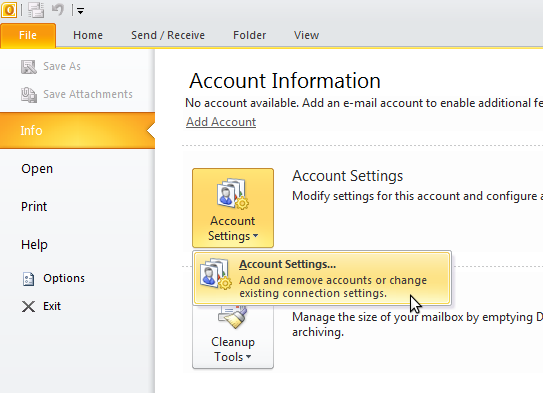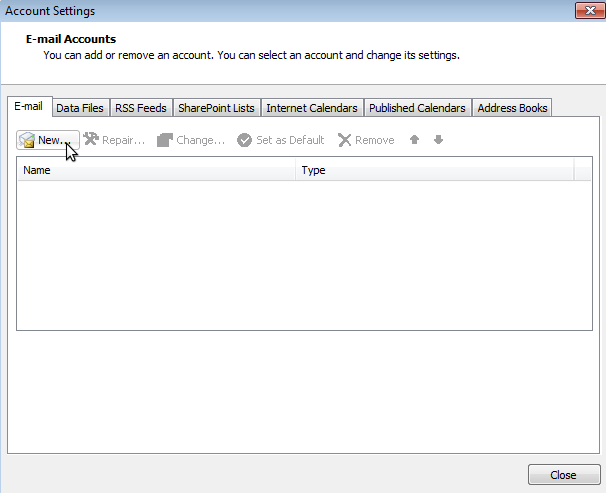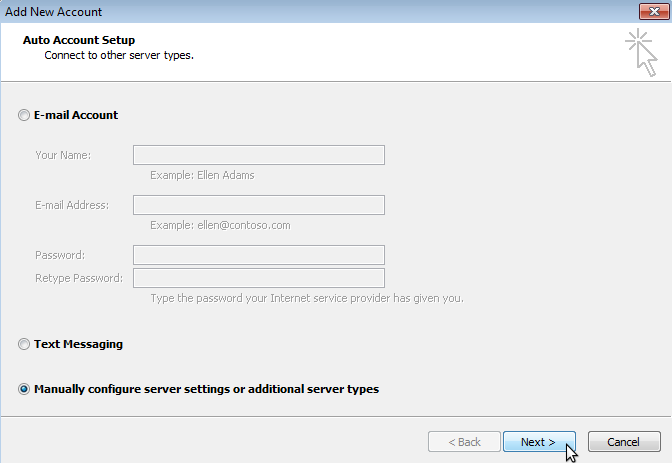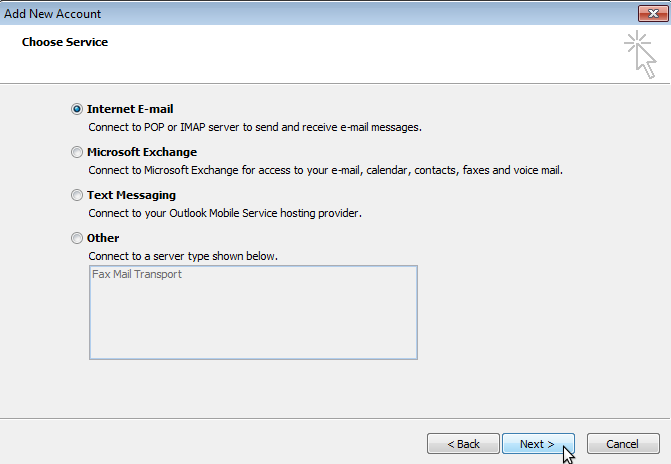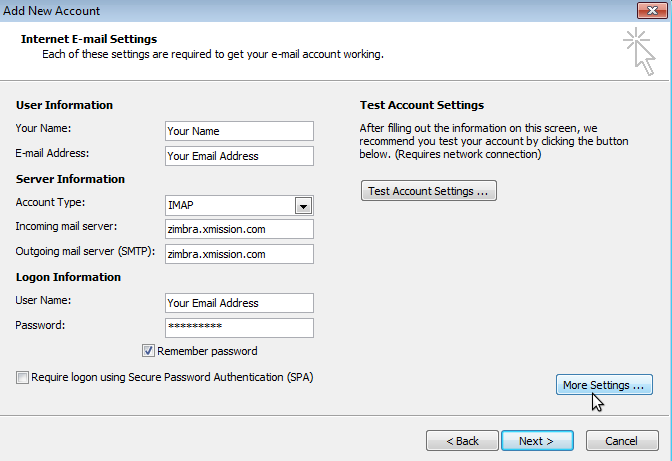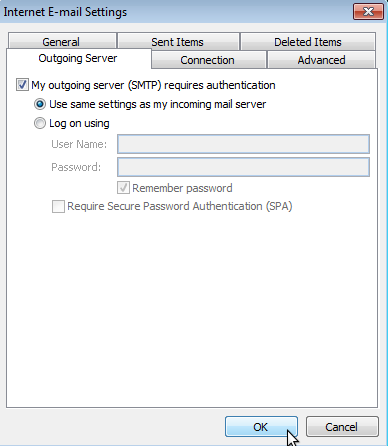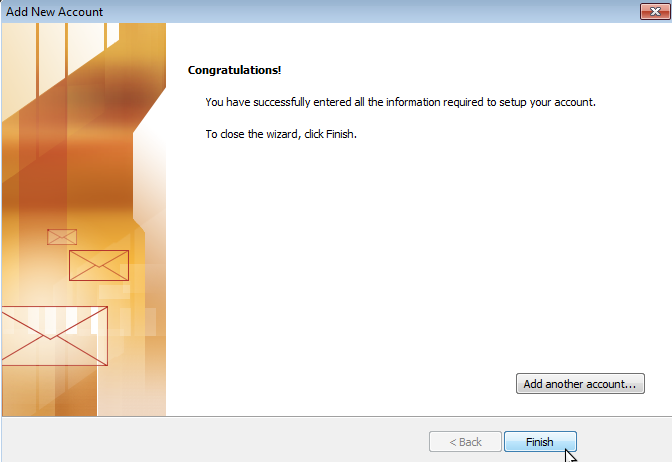Hosted Email:Outlook 2010: Difference between revisions
No edit summary |
Natrinicle (talk | contribs) No edit summary |
||
| Line 31: | Line 31: | ||
<br/> | <br/> | ||
<br/> | <br/> | ||
7. Click the ''Finish'' button. You should now be able to send and receive mail. | 7. Goto the ''Advanced'' tab and set both dropdown boxes that say ''Use the Following Type of Encrypted Connection'' to SSL and set ''Outgoing server (SMTP)'' to port 465. | ||
<br/> | |||
<br/> | |||
<br/> | |||
8. Click the ''Finish'' button. You should now be able to send and receive mail. | |||
:[[Image:2010-7.png]] | :[[Image:2010-7.png]] | ||
Revision as of 11:24, 27 March 2013
Important: Outlook 2010 is currently in beta and not officially supported. This page is merely to assist those experimenting with the Office 2010 Beta and may be inaccurate as changes are made to Outlook 2010 before the final release.
1. Click on the File menu, then go to the Info submenu and click on the Account Settings button.
2. Click the New... button underneath the E-mail Tab.
3. Before filling in any information check the box labeled Manually configure server settings or additional server types and click Next.
4. Select Internet E-mail from the options presented and click Next.
5. Fill out the information on this window as seen below and then click on the More Settings... button.
Note: Account type can be set to POP is desired but for maximum compatibility and additional features we strongly suggest selecting IMAP as the server type.
6. Goto the Outgoing Server tab and check the box that says My outgoing server (SMTP) requires authentication and make sure Use same settings as my incoming mail server is selected underneath that.
7. Goto the Advanced tab and set both dropdown boxes that say Use the Following Type of Encrypted Connection to SSL and set Outgoing server (SMTP) to port 465.
8. Click the Finish button. You should now be able to send and receive mail.
